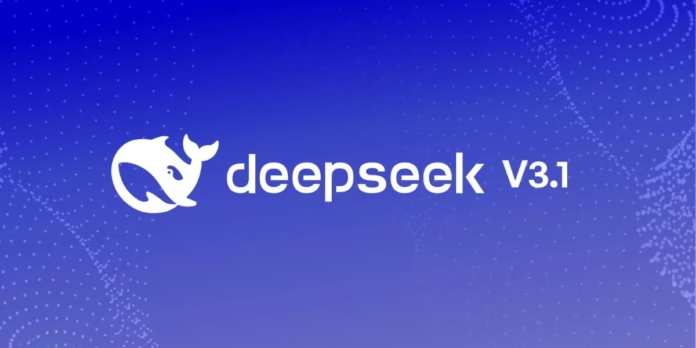Chinese AI startup DeepSeek has launched its most ambitious model yet, a 685-billion-parameter system named DeepSeek V3.1. Released quietly on Hugging Face this week, the model is already drawing attention for performance levels that analysts say rival those of OpenAI and Anthropic.
The debut could reshape enterprise AI adoption strategies worldwide while sharpening the technological competition between China and the United States.
A Quiet Release With Major Implications
DeepSeek V3.1 was made available with little fanfare, but benchmark results suggest the open-source model performs on par with some of the most advanced proprietary AI systems. For enterprises, the availability of such a large-scale model in open form could mark a turning point, offering lower costs and more control compared to closed platforms.
The timing is significant. Earlier this month, OpenAI announced its first open-weight models since GPT-2, a move CEO Sam Altman admitted was influenced by growing pressure from Chinese open-source projects like DeepSeek. Altman also warned that the US risks underestimating China’s pace of AI progress, noting that sanctions alone may not be enough to slow it down.
Intensifying Global AI Rivalry
DeepSeek’s models have gained attention for their sheer scale and wide context windows. With V3.1, the company has entered a territory long dominated by US tech giants.
“DeepSeek’s 685B open-source model accelerates commoditization of raw AI capability, eroding the closed-model moat of US players,” said Oishi Mazumder, senior analyst at Everest Group. “OpenAI, Anthropic, and Google must now differentiate through trust, governance, and enterprise-grade ecosystems rather than model size.”
The accessibility of V3.1 could shift market expectations. “By granting developers unfettered access to frontier-scale AI, DeepSeek has upended prevailing dynamics,” explained Prabhu Ram, VP at Cybermedia Research. “It raises the bar on size, performance, and cost, pushing incumbents tied to proprietary systems to rethink their approach.”
DeepSeek’s roadmap also includes its next-generation R2 model, though its launch has been delayed due to training challenges on Huawei chips. Reports suggest the company has shifted to Nvidia hardware for training, while reserving Huawei processors for inference.
Enterprise Adoption and Market Impact
For now, analysts believe DeepSeek V3.1 will have limited impact in the US, where enterprises prefer domestic vendors offering integrated platforms, enterprise support, and compliance safeguards.
“To gain traction in the US, geopolitical tensions would need to ease, and DeepSeek would have to show it can outperform Western open-source rivals like Meta, Mistral, and Nvidia in enterprise use cases,” said Lian Jye Su, chief analyst at Omdia.
Outside the US, however, DeepSeek’s permissive licensing may attract CIOs looking to lower AI development costs, accelerate innovation, and gain greater control through customization and self-hosting. But its scale also demands vast computing resources and careful consideration of infrastructure and compliance challenges.
“DeepSeek could appeal to enterprises abroad, but adoption depends on balancing infrastructure costs, compliance risks, and export restrictions,” Ram cautioned.
Challenges Ahead
Despite its scale, DeepSeek may struggle to meet the enterprise-grade support, governance, and compliance standards offered by rivals like Anthropic’s Claude Sonnet 4.
“DeepSeek’s success highlights the intensifying rivalry between China and the US, where both are racing to advance AI regardless of sanctions or restrictions,” noted Neil Shah, VP of research at Counterpoint Research.
The release of DeepSeek V3.1 underscores how open-source models are reshaping the global AI landscape. While adoption may vary by region, the move signals China’s determination to challenge US leadership in advanced technologies.


